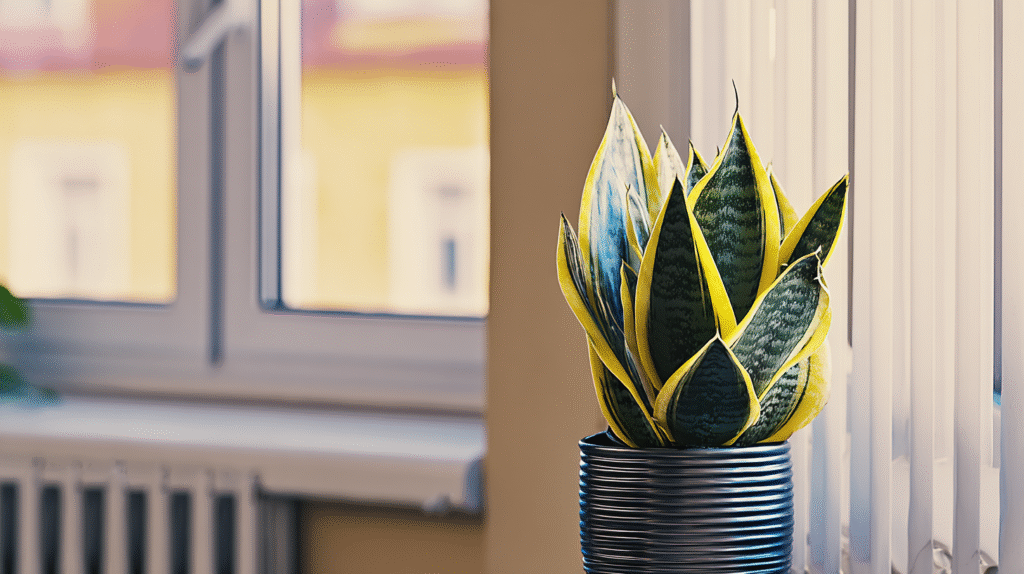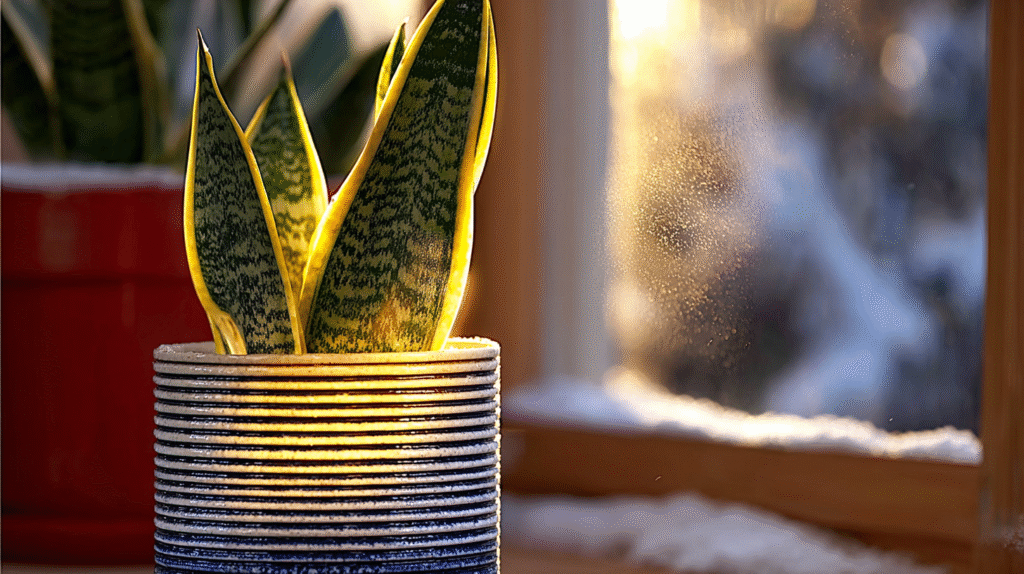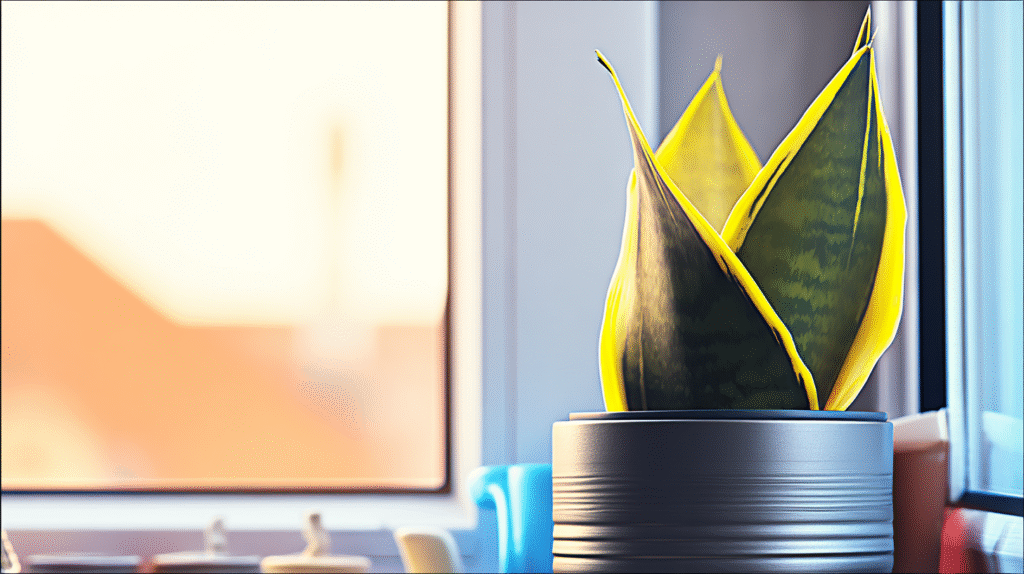Let me tell you about my first snake plant disaster. I bought a gorgeous Sansevieria from Home Depot, thinking I’d scored the perfect beginner plant. Everyone said they were indestructible, right? So I stuck it in my darkest corner (because “they love low light!”) and watered it every Sunday like clockwork.
Two months later? I was staring at a mushy, yellowed mess that smelled like a forgotten gym sock. The “unkillable” plant had been thoroughly murdered – by me.
But here’s the thing – after this humbling experience (and two more casualties that ended up in the trash), I became obsessed with cracking the snake plant code. Today, my tiny apartment houses eight thriving Sansevierias that have survived my learning curve, a cross-country move, and even that time I forgot about them during a month-long vacation. Here’s everything I wish someone had told me from day one.
The Snake Plant Reality Check Nobody Talks About
Look, snake plants are definitely tough cookies, but calling them invincible is like saying teenagers are easy – technically possible, but usually a lie. Through way too much trial and error, I discovered they have three major enemies:
Overwatering – This is THE serial killer of snake plants. More plants die from too much love than neglect.
Complete darkness – Despite what Pinterest says, they’re plants, not cave mushrooms. They need some light to actually, you know, photosynthesize.
Helicopter plant parents – Yep, you can literally love them to death. They’re the introverts of the plant world – they need their space.

Watering: The Delicate Art of Strategic Neglect
Here’s my golden rule that’s saved countless snake plants: When in doubt, don’t water. I’m serious. Put down that watering can and walk away.
What actually works in real life: • Summer: I water mine every 3-4 weeks (sometimes longer if I forget) • Winter: Maybe every 6-8 weeks if they’re lucky • Always: Check the soil first – no exceptions
My favorite trick? The chopstick test. Sounds fancy, but it’s just sticking a wooden chopstick deep into the soil. Comes out clean and dry? Time to water. Got dirt clinging to it? Your plant’s fine – go watch Netflix instead.
I learned this after drowning my second snake plant. The soil looked dry on top, but underneath? Swamp city. Now I’m religious about the chopstick test, and haven’t lost a plant to overwatering since.
Light Requirements: The Biggest Lie in Plant Care
Everyone and their grandma will tell you snake plants thrive in darkness. This is absolute bullshit. They tolerate low light the same way I tolerate my neighbor’s music at 2 AM – barely, and with growing resentment.
Here’s what they actually prefer: ✔ Bright indirect light – This is their happy place ✔ Some gentle morning sun – Won’t hurt, might even get you flowers ✔ Office fluorescent lights – Better than a dark corner ✔ Near a window with sheer curtains – Perfect balance
My apartment’s pretty dark, so I’ve experimented with every possible spot. The snake plant in my bathroom with no windows? Still alive after two years, but hasn’t grown a single new leaf. The one sitting 3 feet from my east-facing window? It’s doubled in size and even bloomed last spring (yes, they can flower!).
The Perfect Soil Mix (That Took Me Four Dead Plants to Figure Out)
After killing several plants with regular potting soil that stayed wet forever, I finally created this foolproof recipe:
• 50% decent quality potting soil – Nothing fancy, just not the dollar store stuff • 30% perlite or pumice – For drainage, because wet feet = dead plant • 20% coarse sand or fine gravel – More drainage (sensing a theme?)
Why this works: Snake plants are originally from Africa where it doesn’t rain for months. They’re built for drought, not swamps. This mix drains fast enough that even my tendency to overwater can’t kill them.
Pro tip: I mix a huge batch and store it in an old cat litter bucket. Saves time and guarantees consistency.
Choosing the Right Pot (Yes, It Actually Matters)
Three non-negotiable rules I learned the hard way:
• Drainage holes or death – No drainage = no snake plant. Period. • Terra cotta is your best friend – Plastic holds moisture, terra cotta breathes • Size matters – Only go 1-2 inches wider than the root ball
That gorgeous ceramic pot with no holes? That’s a death trap. I killed my third snake plant this way – thought I could just “be careful” with watering. Spoiler: I couldn’t.
When and How to Repot Without Drama
Snake plants actually like being a bit cramped – they’re the studio apartment dwellers of the plant world. You’ll know it’s time when:
• Roots are literally busting through drainage holes • The pot’s cracking from root pressure • Water runs straight through without absorbing • Growth has completely stalled for over a year
My stress-free repotting method:
- Give it a light drink 2 days before (makes removal easier)
- Wiggle it out gently – no yanking or you’ll damage roots
- Inspect roots and cut off anything black, mushy, or sketchy
- Pop it in fresh soil mix
- Don’t water for a full week (this is crucial!)
Last time I repotted, I discovered my “dying” snake plant actually had root rot. Cut away the bad parts, repotted in proper soil, and it bounced back within a month

Feeding: Why Less Is Definitely More
Real talk? I barely fertilize anymore. Here’s why:
In nature, these plants grow in poor soil and do just fine. That expensive plant food? Usually unnecessary and sometimes harmful.
If you absolutely must fertilize: • Spring/Summer: Super diluted cactus fertilizer once a month MAX • Fall/Winter: Nothing. Nada. Zero. Zip.
I learned this after giving my plants fertilizer burn (brown tips everywhere). Now I might fertilize twice a year, and honestly? They look exactly the same, just without crispy edges.
Common Problems and Real Solutions
Yellow, mushy leaves? You’re definitely overwatering. I know because I’ve been there. Unpot immediately, cut off all the gross roots (they’ll be black and slimy), let it dry for a day, then repot in fresh, dry soil. Wait a week before watering.
Brown, crispy tips? Could be your tap water (too much chlorine/fluoride) or low humidity. I switched to filtered water for a while, then realized the brown tips didn’t actually hurt the plant. Now I just trim them with scissors and call it good.
No new growth for months? Too dark, too cold, or root-bound. Move it somewhere brighter, check if it needs repotting, or just accept that winter growth is slow.
Leaves falling over? Either overwatering (again) or the plant’s getting too heavy. Check the roots first, then consider staking if needed.
Dealing with Pests (When Your “Pest-Proof” Plant Gets Bugs)
Snake plants rarely get bugs, but it happens. Here’s what I’ve dealt with:
• Mealybugs – Look like cotton balls. Dab with rubbing alcohol on a Q-tip • Spider mites – Tiny webs = bad news. Shower the whole plant • Fungus gnats – Annoying but harmless. Let soil dry completely between waterings
The gnats drove me crazy until I realized they only show up when soil stays moist. Now with proper watering, I haven’t seen one in years.
Propagation: Free Plants Forever
Two methods that actually work:
Water propagation:
Cut a healthy leaf into 3-4 inch pieces (mark which end was up!). Stick the bottom ends in water. Change water weekly. When roots hit 2 inches, plant them. Takes forever but it’s foolproof.
Division:
My favorite method. Pull the whole plant out, gently separate the root clumps (they come apart pretty easily), and replant immediately. Instant new plants!
Warning: If you’ve got a fancy variegated type, only use division. Leaf cuttings revert to boring solid green – learned that disappointing lesson with my $30 ‘Laurentii’.
Final Thoughts: Embrace the Neglect
After all my snake plant murders and resurrections, here’s what I’ve learned:
The secret isn’t what you do – it’s what you don’t do. Stop hovering. Stop watering every week. Stop moving them around trying to find the “perfect” spot. Just let them live their best plant life with minimal interference.
My healthiest snake plant? It’s the one I accidentally ignored for two months when work got crazy. Came back expecting a corpse, found a thriving plant with three new shoots.
Snake plants aren’t really unkillable – they’re just really good at surviving our worst plant parent tendencies. Give them decent light, well-draining soil, and very occasional water, then pretend they don’t exist. They’ll reward your neglect with years of steady growth and air-purifying goodness.
Trust me, if I can keep eight of these alive in a dark apartment with a chaotic schedule, you’ve got this. Happy (minimal) plant parenting! 🌿







